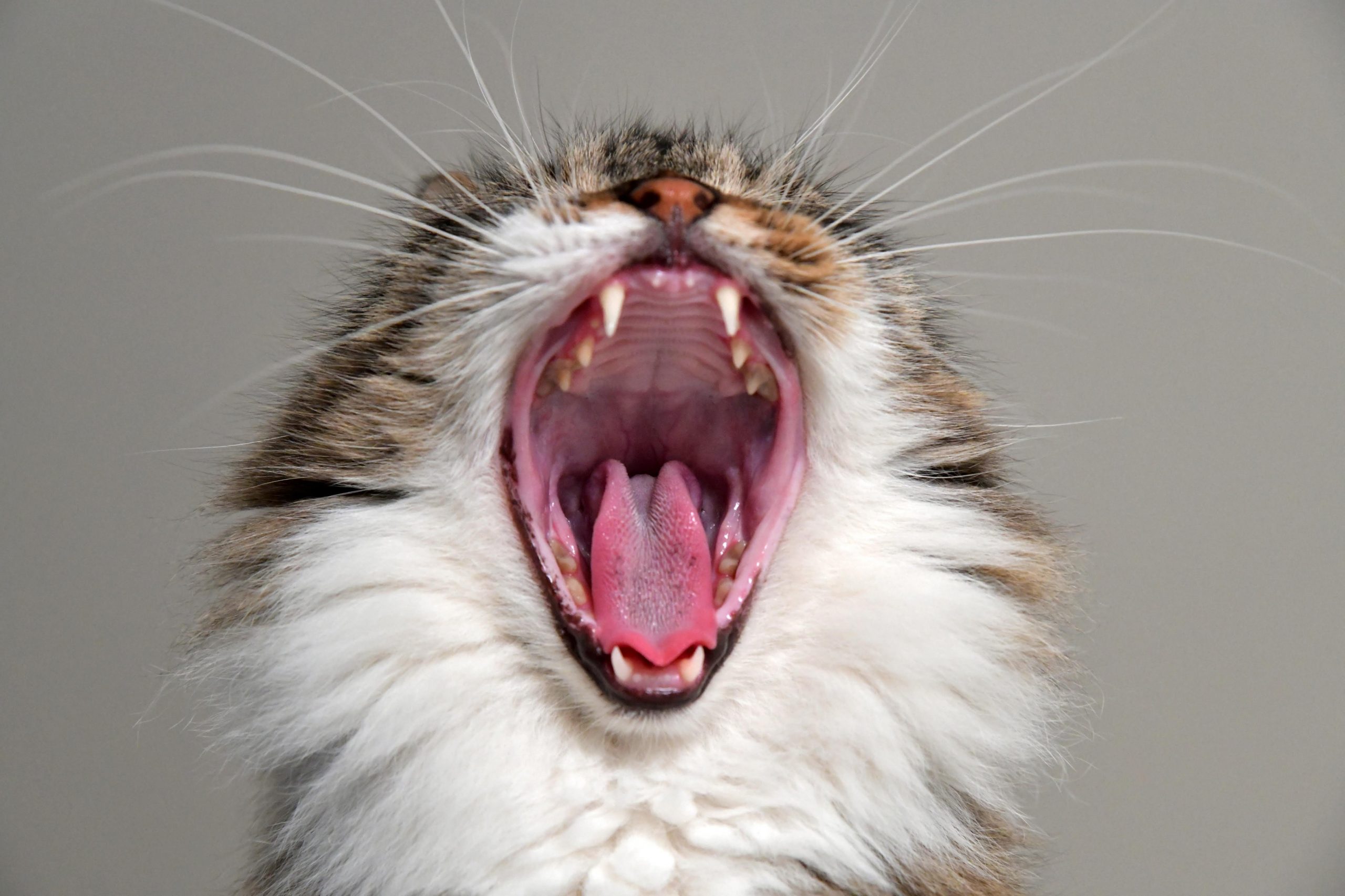Is overstimulation causing your cat to act out?
by Ontario SPCA and Humane Society | Cat Care | June 10, 2021

There you are, enjoying a moment, absentmindedly patting the kitty on your lap, when suddenly she takes a swipe at you! What was that? Or after chasing a toy, your cat’s eyes get wide and his tail twitches before he pounces on your hand. Why is he behaving this way?
Both may be examples of cats being overstimulated, but in different ways. The first one is petting-induced aggression, lashing out because she may no longer be able to tolerate the interaction. In the second example, the cat is just so into the hunting and play behaviour, he has crossed over a line into seeing you as part of the predator/prey scenario.
Cats have their own language they use to communicate and we need to learn that language to be good companions ourselves.
Tolerance differs
Like humans, our feline companions’ tolerance for interaction and touch can vary greatly. As cat parents, it is up to you to learn to read your cat’s body language. Understand her preferences and when and if your cat wants to interact.
What are the signs?
Typical signs that your cat’s tolerance is near its limit can include:
- Tail swishing back and forth quickly
- Skin twitching across the back
- Growling or hissing
- A change from dilated pupils to contracted pupils, or vice versa, which could indicate a change of mood, either to predatory behaviour or annoyance.
- Body posture may become rigid and tense
- Cat may directly face the object of annoyance and may start moving towards it (you?)
- Ears may be pulled back against the head
- Whiskers may be pulled back against the face
Pay attention to environment changes such as loud noises, or animals or people entering your cat’s territory. What manifests itself as overstimulation, like biting and swatting, may actually be redirected aggression or angst. With no outlet, a cat may redirect their frustration onto a person or another creature.
Heed the warnings
If your cat exhibits any of these signs, end the interaction. Calmly walk away and give her some space. If she is on your lap, slowly stand up and let the cat gently slide off. Wait before trying to interact again. This gives her space, shows her you understand her signals and are respecting her wishes.
Build trust
You may find it surprising and upsetting when your beloved kitty behaves aggressively. The very worst reaction is to punish the cat. This will only escalate the problem. Instead, build trust by making every interaction with her a positive one. If she gets upset during petting, shorten the petting session. She will learn you are listening to her and respecting her boundaries.
Redirect aggressive play
If during play time kitty gets overstimulated and attacks hands or feet, it is important to redirect. Particularly with kittens, do not get into the habit of using your hands or feet to play with them. They will learn that hands and feet are toys and this will be a hard habit to break.
Provide an appropriate outlet
Use toys that will create a bit of distance between hands and a cat acting aggressively, such as a cat wand or pointer or kitty balls. There are great DIY cat wands you can make from kitty safe materials. Make sure never to leave string unattended with cats, especially those with a strong predatory instinct. These cats might have a higher risk of ingesting the string and causing a potentially major medical issue.
Toys are great for redirecting a riled up cat’s attention. They provide a safe and appropriate outlet for the cat’s urge to attack, kick and chew. However, please keep in mind, activities like laser pointers can cause frustration for your cat when there’s no reward for their work. We recommend finishing laser pointer play with treats or something else to close the behaviour loop. Formally ending the excited behaviour can help settle the cat down and minimize the risk of the cat redirecting aggressive play onto people.
Stave off boredom
Aggression is more likely if your cat is bored and frustrated by being under-stimulated for too long, which can sometimes happen during the work day. By ensuring there are toys to play with, other items of enrichment and outlets for normal cat behaviour available, kitty will be stimulated and content when you are not around.
For more helpful tips, check out the following websites:
ShelterHealth Pro: https://ontariospca.ca/spca-professional/shelter-health-pro/
Fear Free Happy Homes: https://www.fearfreehappyhomes.com/
ASPCA, including: https://www.aspca.org/pet-care/cat-care/common-cat-behavior-issues/aggression-cats
Categories
Testimonial
Wish to thank everyone involved
I wish to thank everyone involved in the care and rescue of animals, especially volunteers.
